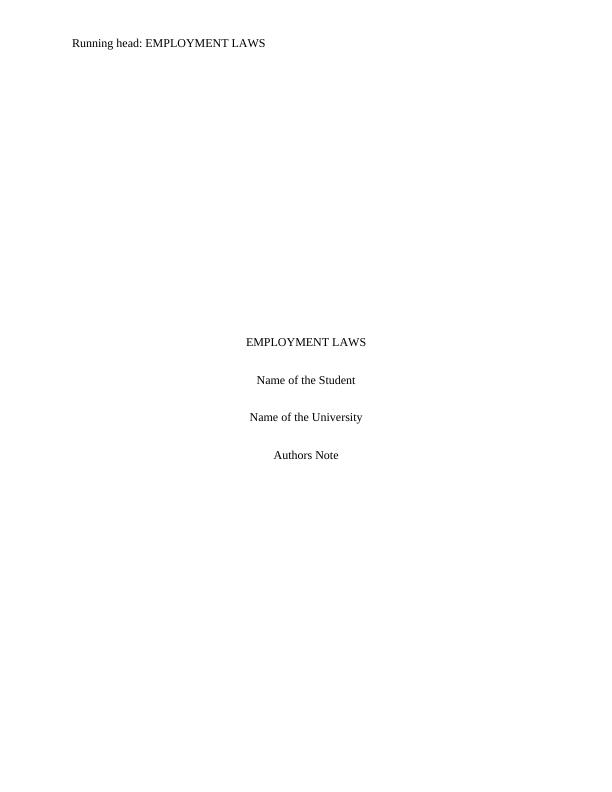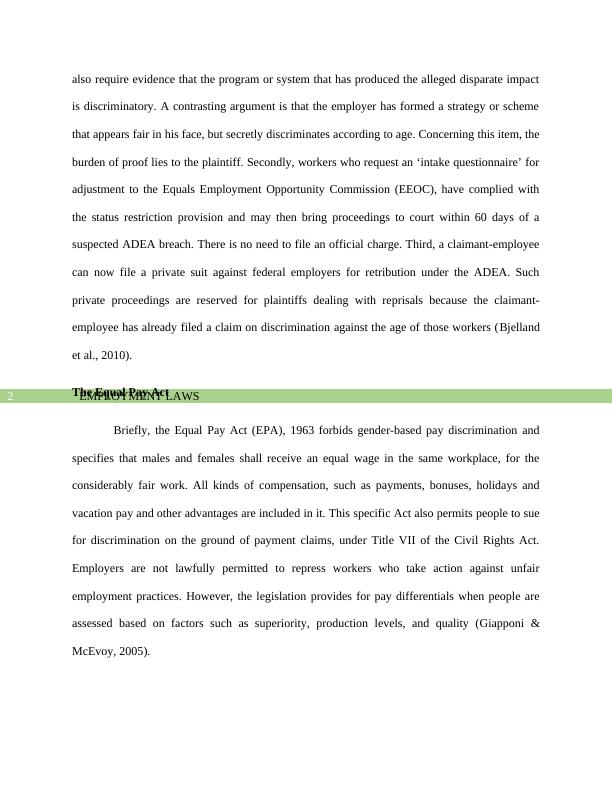Age Discrimination in Employment Act
Analyzing recent legislation protecting employees from discrimination and exploring the Employment-at-Will Doctrine and its exceptions.
10 Pages2436 Words13 Views
Added on 2022-08-18
Age Discrimination in Employment Act
Analyzing recent legislation protecting employees from discrimination and exploring the Employment-at-Will Doctrine and its exceptions.
Added on 2022-08-18
ShareRelated Documents
End of preview
Want to access all the pages? Upload your documents or become a member.
Fundamentals of Human Resource Management 11e Chapter 3 Equal Chance Employment Introduction
|41
|2607
|16
Age Discrimination in Employment: Reasons, Analysis and Legal Provisions
|8
|1896
|72
Effectiveness and Impact of the U.S Laws
|5
|1183
|19
ADA Amendments Act of 2008
|5
|1048
|12
Equal Employment Opportunity Commission: Trends and Priorities
|5
|722
|44
Polo Company In The United States l Assignment
|4
|1092
|22



